Sistotremastrum guttuliferum Melo, M. Dueñas, Telleria & M.P. Martín
Introduction
Unlike most crusts, which have four sterigmata, species in the genus Sistotremastrum typically have six. Sistotremastrum guttuliferum is distinct in the genus for having hyphae that are full of small oil drops (called guttules, hence the specific epithet). Superficially, the creamy white sporocarp is impossible to differentiate from the many other similar looking crusts, especially given its variable appearance, so this is a group that definitely requires microscopy. Described in 2013 from the Macaronesian region (islands in the Atlantic Ocean off the coast of Africa and the Iberian peninsula), the specimen analyzed here appears to be the first confirmed report from North America.
Description
Ecology: Collected late winter, early spring, possibly growing year-round, on the bottom of unidentified fallen wood; while first described from Macaronesia, this specimen was collected in Massachusetts, another specimen with a genetic barcode match of 99% was previously collected in Wisconsin, and recently other sequences, notably from China, have appeared on GenBank, suggesting widespread occurrence across the Northern Hemisphere.
Basidiocarp: Whitish, resupinate, effused basidioma with a smooth to papillate hymenophore and indeterminate, pruinose margin; somewhat ceraceous when fresh, sometimes cracked like tiles, becoming cracked and membranaceous when dry.
Spore print: Unknown.
Hyphal system: Monomitic, all septa clamped; subicular hyphae somewhat thick-walled, width (3.6) 3.9–5.1 (5.3) µm, x̄ = 4.5 µm (n = 10), cytoplasm filled with small oil drops.
Basidia: Clavate, sometimes with a slight constriction at the waist, with six sterigmata; length (16.6) 17.6–20.8 (22.0) µm, width (6.0) 6.2–7.0 (7.2) µm, x̄ = 19.2 ✕ 6.6 µm (n = 10); sterigmata lenth (4.6) 4.8–5.5 (5.6) µm, x̄ = 5.1 µm (n = 10), shriveling up as the basidia age.
Basidiospores: Narrowly cylindrical, inamyloid; length (6.2) 6.5–8.1 (9.3) µm, width (2.5) 2.7–3.1 (3.2) µm, x̄ = 7.3 ✕ 2.9 µm, Q (2.1) 2.2-2.8 (3.6), x̄ = 2.6 (n = 30).
Sterile structures: Absent.
Sequences: ITS rDNA (MW488061, MW488062).
Notes: All measurements taken in KOH stained with phloxine. The type description of Sistotremastrum guttuliferum states that guttules are only found in the subicular hyphae but in this specimen they were also prominent in the subhymenial hyphae.
Specimens Analyzed
BHI-F0755, MO320524; 29 March 2017; Webb Memorial State Park, Boston Harbor Islands National Recreation Area, Suffolk Co., MA, USA, 42.2592 -70.9243; leg. Alden Dirks & James Mitchell, det. Alden Dirks, ref. Telleria et al. (2013); Kriebel Fungarium PUL F27733.
References
Telleria, M. T., Melo, I., Dueñas, M., Salcedo, I., Beltrán-Tejera, E., Rodríguez-Armas, J. L., & Martín, M. P. (2013). Sistotremastrum guttuliferum: A new species from the Macaronesian islands. Mycological Progress, 12(4), 687–692.
Telleria, M. T., Dueñas, M., & Martín, M. P. (2014). Sistotremastrum chilensis (Trechisporales, Basidiomycota), a new species from Chilean Patagonia. Phytotaxa, 158(1), 93–98.
Links
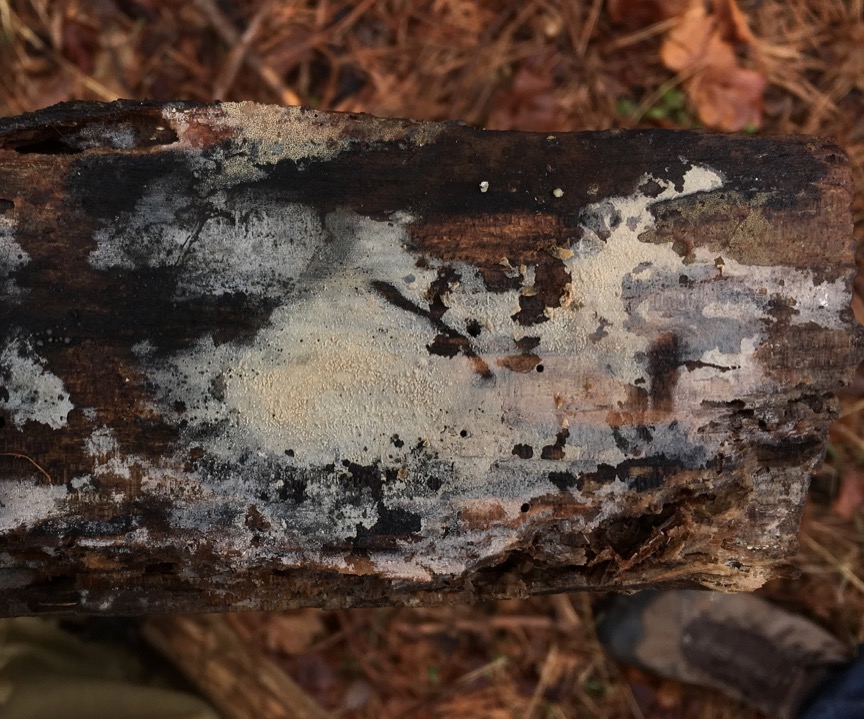
Sistotremastrum guttuliferum collected at the Boston Harbor Islands National Recreation Area in March, 2017.
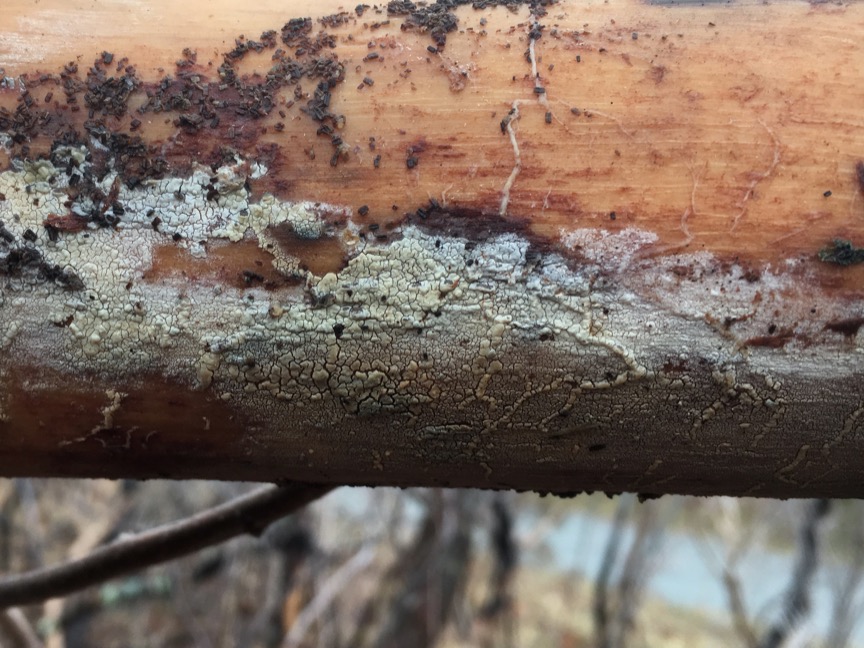
The hymenophore varies from papillate to smooth and cracked.
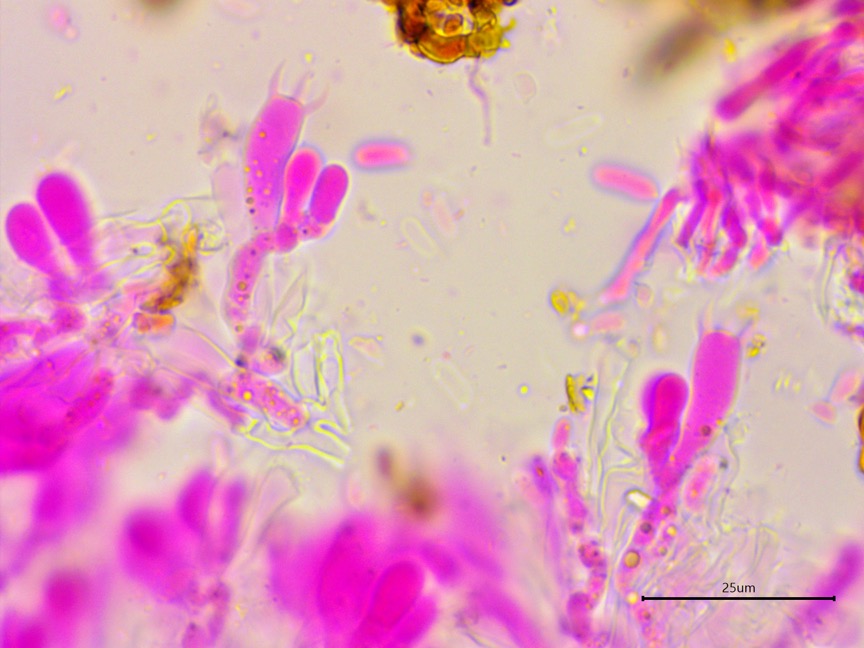
Basidia with 6 sterigmata and small oil droplets in the generative hyphae.
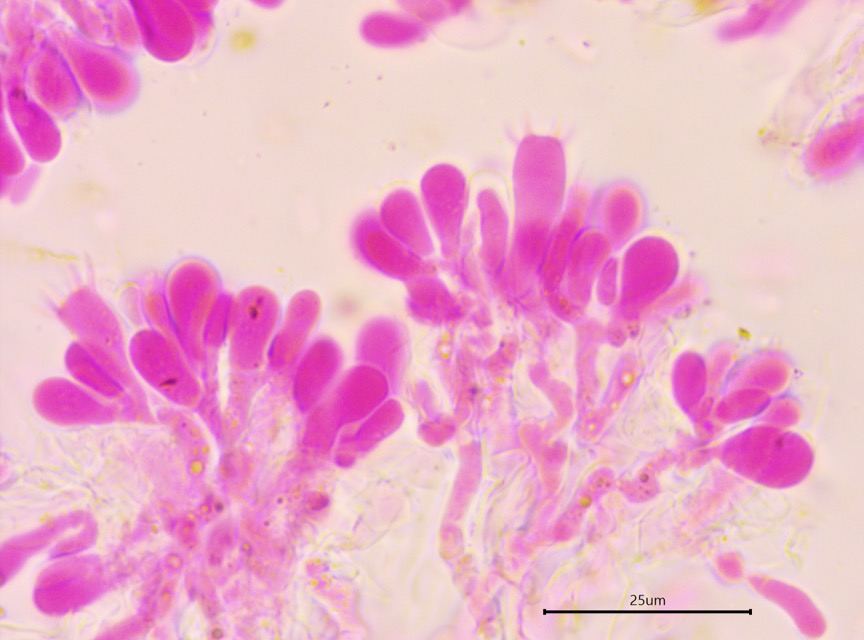
Another look at the basidia with 6 sterigmata.
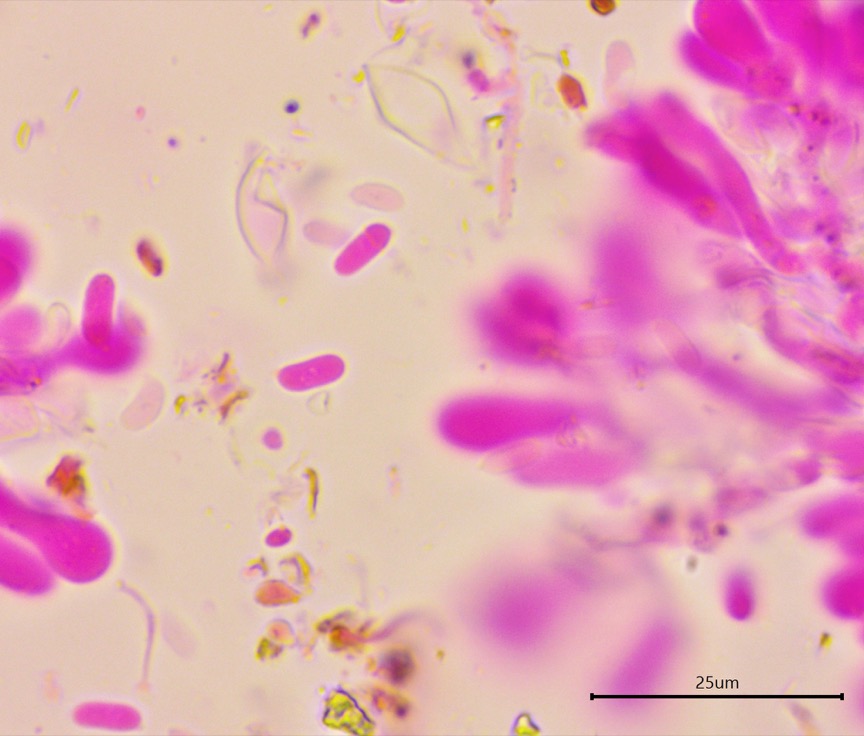
Narrowly cylindrical spores.
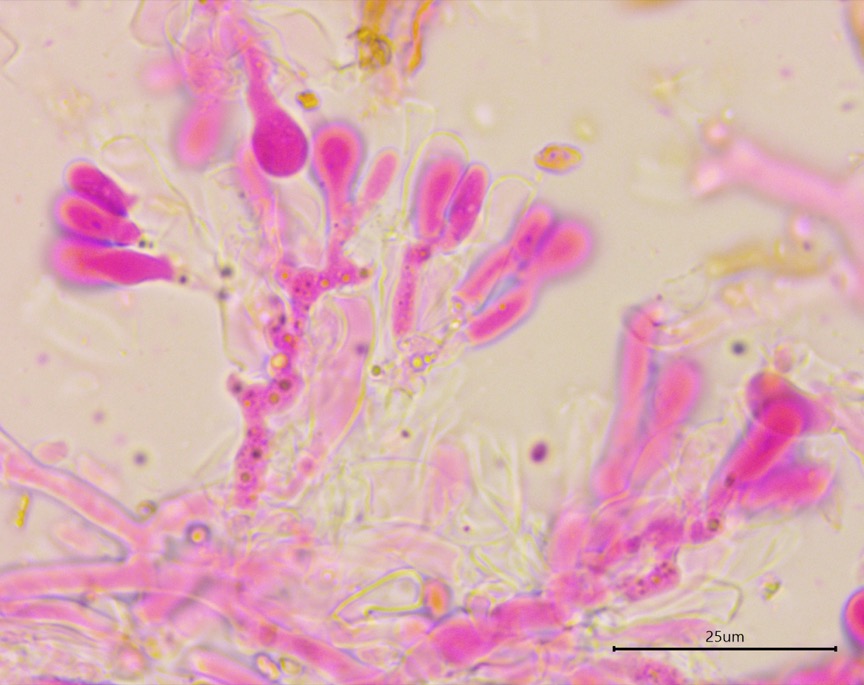
True to its name, this species has hyphae filled with guttules.
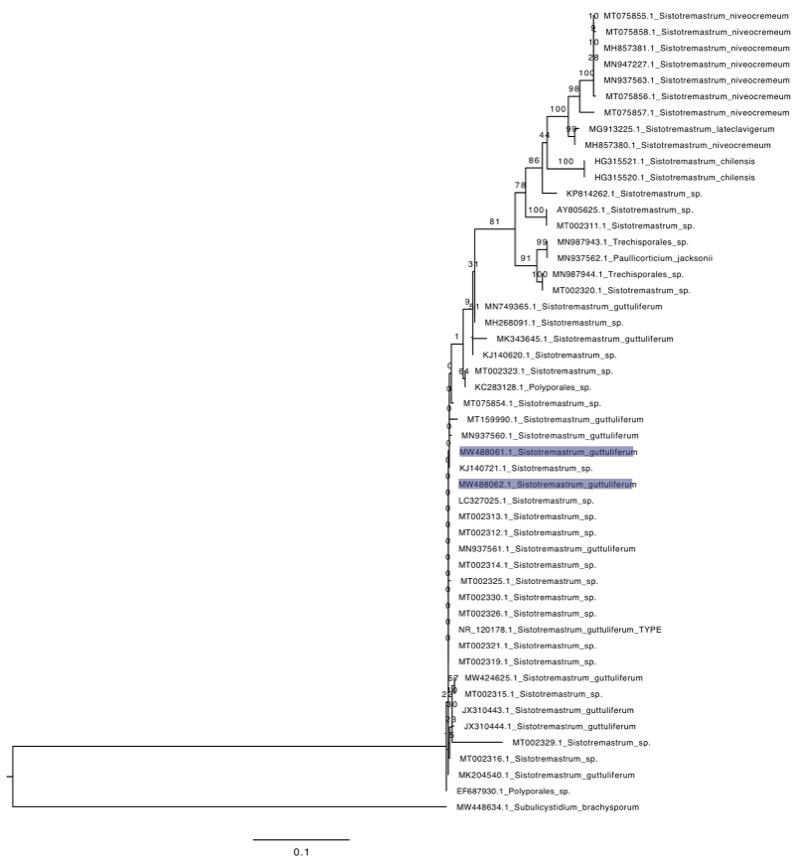
Phylogenetic tree of ITS rDNA sequences from the studied specimen (highlighted) and selected vouchered specimens on GenBank. The sequences were processed with ITSx to remove the flanking SSU and LSU partial sequences, aligned in SeaView with MUSCLE, and made into a tree with RAxML using 100 bootsrap replicates and the GTRGAMMA substitution model. Subulicystidium brachysporum serves as the outgroup.
